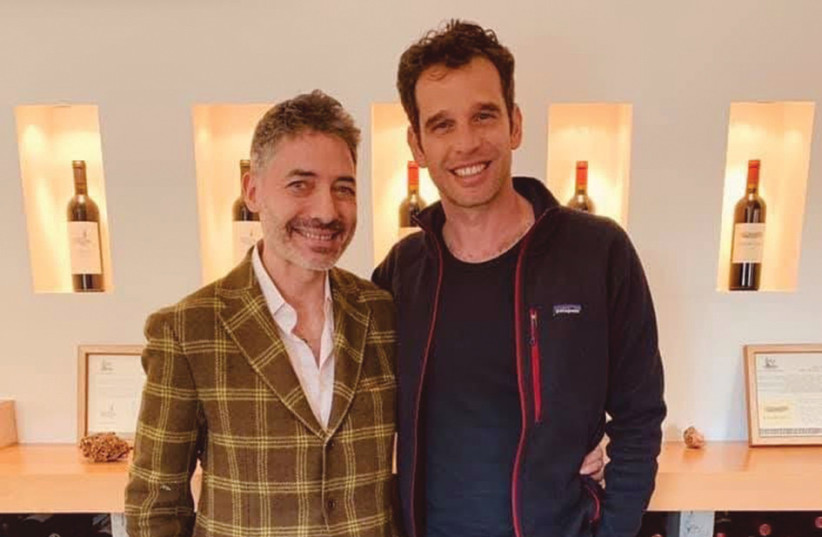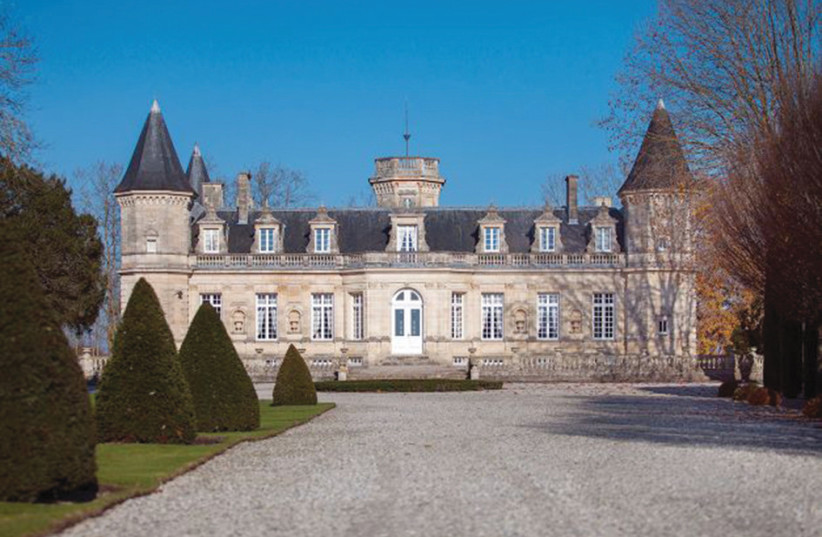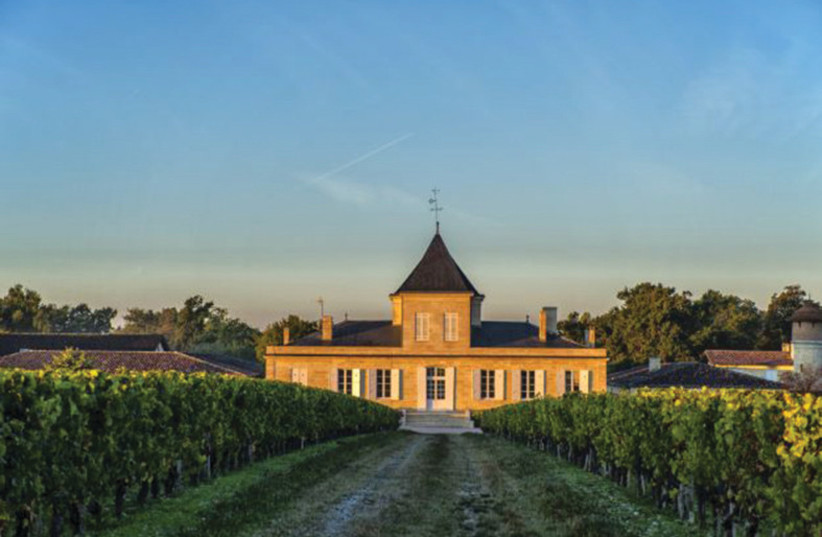Bordeaux is the most famous wine region in the world. It is close to the port city of Bordeaux, in southwest France.
The region is divided into the Left Bank and Right Bank, separated by the Gironde estuary and two rivers – the Dordogne and the Garonne. In the gravelly Left Bank, south of the Garonne, which includes the Médoc and Graves, Cabernet Sauvignon is king, but it is always supported by other Bordeaux varieties.
In the clay soils of the Right Bank, to the north of the Dordogne, including St. Emilion and Pomerol, it is Merlot that dominates, sometimes blended with Cabernet Franc. Though 89% of the Bordeaux wines are red, the whites are made from Sauvignon Blanc and Semillion, and these also include the wonderful, luscious dessert wines, Sauternes.
There are several classifications, but the most famous classification in wine is the 1855 rating of 60 wines in the Médoc, divided in Five Growths (Cru Classé.) The First Growth (Premier Cru) wines, which include names like Chateau Lafite Rothschild and Chateau Mouton Rothschild, are among the most celebrated wines in the world. They are in the stratosphere on their own and cost more than double the price of the Second Growths.
Bordeaux: The pinnacle of wine
Bordeaux is at a pinnacle because of the size of the region, the quality of the wines, the aristocratic image they continually polish and their staying power over centuries. The wines were known from the 12th century, and an incestuous relationship with the British helped fan the reputation of what was known as “Claret” worldwide. Since the 1980s, the Americans had their love affair with Bordeaux, pushing the historic British influence aside; now China and the Far East have taken over from the Brits and Americans.

Most wine investors and collectors around the world still focus on Bordeaux wines. According to David Sokolin (Investing in Liquid Assets): “Just 118 Bordeaux chateaux account for 90% of the entire dollar volume in the investment-grade wine market,” and this includes all the great wine regions elsewhere!
He goes on to say that only 25 Bordeaux wineries control an amazing 80% of the investment market! This shows, more than anything, the hold Bordeaux has on wine lovers, collectors and connoisseurs, but we talking about the creme de la creme. The top of the iceberg is visible, but the mass lies below the surface, unseen and without the exaggerated attention the trophy wine estates receive.
The roots of Israeli wine also intermingle with Bordeaux. A modern Israeli wine industry was founded by Baron Edmond de Rothschild, owner of Chateau Lafite, maybe the most famous winery of all. Furthermore, Carmel’s first winemaker was from Bordeaux, the agronomists were from Bordeaux, and their first winemaking consultant was from Lafite. That was a heady beginning.
Even today, the word “Bordeaux” is continually used in descriptions of wine. Three of our four most planted grape varieties are known as “Bordeaux varieties.” These are Cabernet Sauvignon, Merlot and Petit Verdot. The most common Israeli red-wine blends are made from Cabernet Sauvignon plus any combination of the other Bordeaux varieties. They are referred to as “Bordeaux blends” or “Bordeaux-style wines” by all and sundry.
Israeli importers are dynamic and up to date. They market wine from all over the world, including from many exotic regions. However, though France remains the king of fine wines, good-value Bordeaux wines are scarce. So, what is the reason? The problem lies in the elitist image.
The leading wines are so expensive that only the super-rich can today afford them. Such is the glitz of the golden-plated wineries, that the rest of Bordeaux is unjustly in their shadow. Furthermore, Israel is awash with Cabernet Sauvignon and Merlot, so who needs more? Therefore, perhaps the question to ask is: What is there for the wine lover between Chateau Lafite Rothschild and Mouton Cadet? Where, oh where, are wines of quality, with the typicity of Bordeaux but at a price that the regular wine drinker can afford?

ENTER MARTIN Sinkoff, a Francophile who began a long career in wine in Bordeaux, being assistant to the legendary Alexis Lichine in 1979. With his passion, knowledge and wisdom, Martin carved for himself a very distinguished career in the US, which earned him an enormous amount of respect among his peers. Now he has made aliyah and brought to Israel not only an understanding of wine but also “the business of wine,” shared by precious few others.
Furthermore, he has rare expertise in the wines of France and is arguably the leading expert here on the wines of Bordeaux. His awards of the Ordre National du Mérite Agricole for services to France, presented by the French government, and Les Dames d’Escoffier Lifetime Achievement Award, tell the story in themselves.
To fill the void in the market, he has gathered together a portfolio of Bordeaux wines from the underbelly of Bordeaux through his company MSA (Martin Sinkoff Associates), which is exactly what the doctor ordered. Here are six Bordeaux wines on a platter at very reasonable price points to show the enthusiastic wine lover what Bordeaux is all about. You could call it “An introduction to Bordeaux.” His partner in this project is IBBLS, agents for Diageo, the world’s largest spirits company and importer-distributors of global brands such as Johnnie Walker, Campari and Moet et Chandon. They are also owners of the Tabor Winery.
Before I sat down with Martin to taste the wines, I asked him what makes Bordeaux special. He commented on the cooler climate, lower alcohols, the elegance and length “that does not only appeal to the palate but also to your mind.” I loved that!

He noted that a key word was “balance” and explained that Bordeaux wines are delicious with food because they refresh the palate. When you have had a couple of glasses, you go on to have a third because the wine quenches your thirst.
In Israel, we too are used to New World, hot climate wines. Martin reminded me that in the New World there is more emphasis on the variety and winemaker, while in the Old World, the place and vintage year are considered more important. A critic may say the New World wines can be high in alcohol, with over-ripe, jammy fruit. They are often over-extracted and over-oaked wines. It is sometimes good to recalibrate the palate.
The wines selected by MSA and imported by IBBLS are all wines selected from top Chateaux, with respected owners. Some of the wines are even second or third wines, which means that the vineyard and chateau are gold standard, but the grapes are declassified from the Grand Vin. However, the wines are made the same way and with the same team as their more expensive sibling.
The result is you are left with something of quality at a far more reasonable price. I tasted the wines with Martin, which in itself was an enlightening experience. They were as follows:
B de Maucaillou, Chateau Maucaillou, Medoc 2018. Made from Cabernet Franc, Cabernet Sauvignon, Malbec, Petit Verdot. This is a great introduction to Bordeaux and represents excellent value. It has a classic Cabernet nose of blackcurrant, green herbaceous character and a hint of lead pencil. This is a wine you can open and before you know it, the bottle is finished. It is so drinkable and refreshing. NIS 75
Chateau Beaumont, Haut Medoc 2016. Merlot, Cabernet Sauvignon. This is owned by Chateau Beychevelle, a Fourth Growth wine from St. Julian. It is deeper color, more concentrated with deep black fruit, but it also has a freshness about it. It shows similar benefits to the younger wine but has far more complexity and a lovely, engrossing, silky mouth feel. NIS 160
Chapelle de Potensac, Chateau Potensac, Medoc 2015. Mainly Merlot, Cabernet Sauvignon. This is the second wine of Chateau Potensac and is owned by Chateau Leoville Las Case, Second Growth. This is an older wine beginning to develop some of the secondary and tertiary flavors as is usual in a wine with a little bottle age. The wine is velvety smooth with a lingering finish. Martin described the tannins as “smooth like a polished stone.” Yet the spine of the wine was prominent, running all the way through to the finish, giving the wine an attractive texture. NIS 150
Margaux de Brane, Chateau Brane-Catenac , Margaux 2018. Cabernet Sauvignon, Merlot, Petit Verdot. This is the third wine of a Second Growth, owned by the Lurton family, one of the great names of Bordeaux. The wine was the star of the tasting. It had a beautiful seductive nose and a layered complexity. Martin described it as “the gentleman at the table. Discreet. It holds itself, listens… does not shout.” Ahh, wine tasting brings out the poet in him! The wines are good, but the real joy is hearing him talk about them. NIS 200
Chateau Croix-Mouton 2019. Mainly Merlot. This is a chateau owned by the Moueix family, just outside of Fronsac, this time on the Right Bank. This by comparison is a fuller, bigger wine, made mainly from Merlot. It has deep, ripe, plummy fruit and a mouth-filling flavor. Those who prefer Israeli wines may find this a good introduction to Bordeaux. NIS 120

Blanc Sec de Suduiraut, Sauternes 2020. Semillon, Sauvignon Blanc. This is a beautiful white wine, but dry, not like their more famous dessert wines. The nose is aromatic, with a pronounced Sauvignon Blanc nose. In the mouth, it is fatter, more waxy, showing the texture of the Semillon. In this tasting, we sampled the reds first and only afterward tasted the white. Martin explained this was to prepare the palate for the wine with more acidity. NIS 140
My favorites were the Chateau Beaumont, Margaux de Brane, and the Blanc Sec de Suduiraut. No doubt that the B de Maucaillou was a “Best Buy.”
I don’t want to forget the kosher wine drinker. Now, there is no lack of kosher expressions of classed growth cuvées, but some are pretty expensive. In my view, two wines punching above their weight are Chateau Clarke 2018 (NIS 270) and Chateau Malmaison 2019 (NIS 220). They offer better value than some of the more illustrious names. Whatever your poison, a complete range of kosher Bordeaux wines is imported to Israel by Zur Agencies of Bnei Brak. They represent the broad portfolio of Royal Wine Europe.
So, if you are curious and want to find out what this Bordeaux lark is all about, dive in. Now you have the opportunity.
The writer is a wine industry insider turned wine writer, who has advanced Israeli wines for 35 years. He is referred to as the English voice of Israeli wine. www.adammontefiore.com
